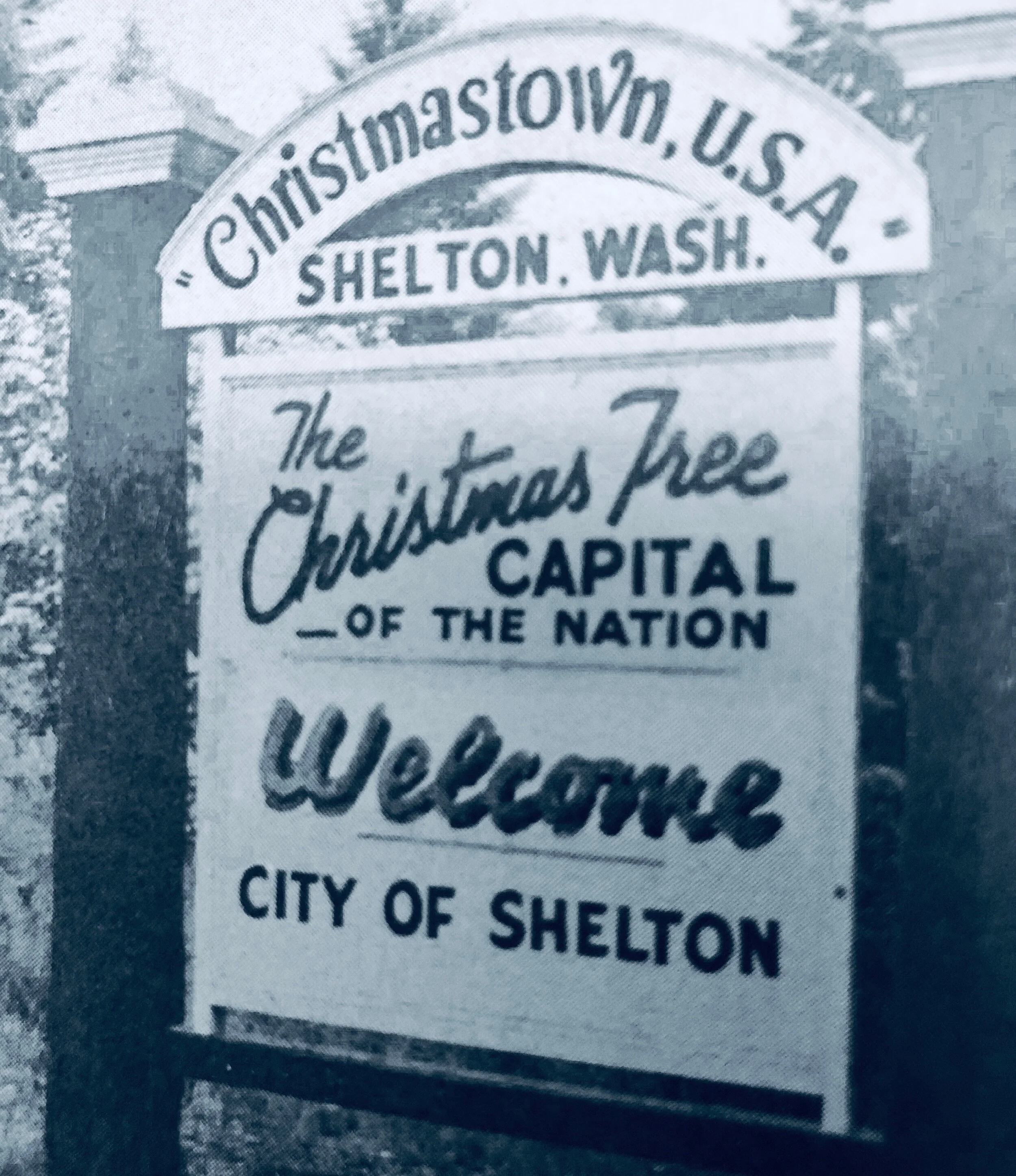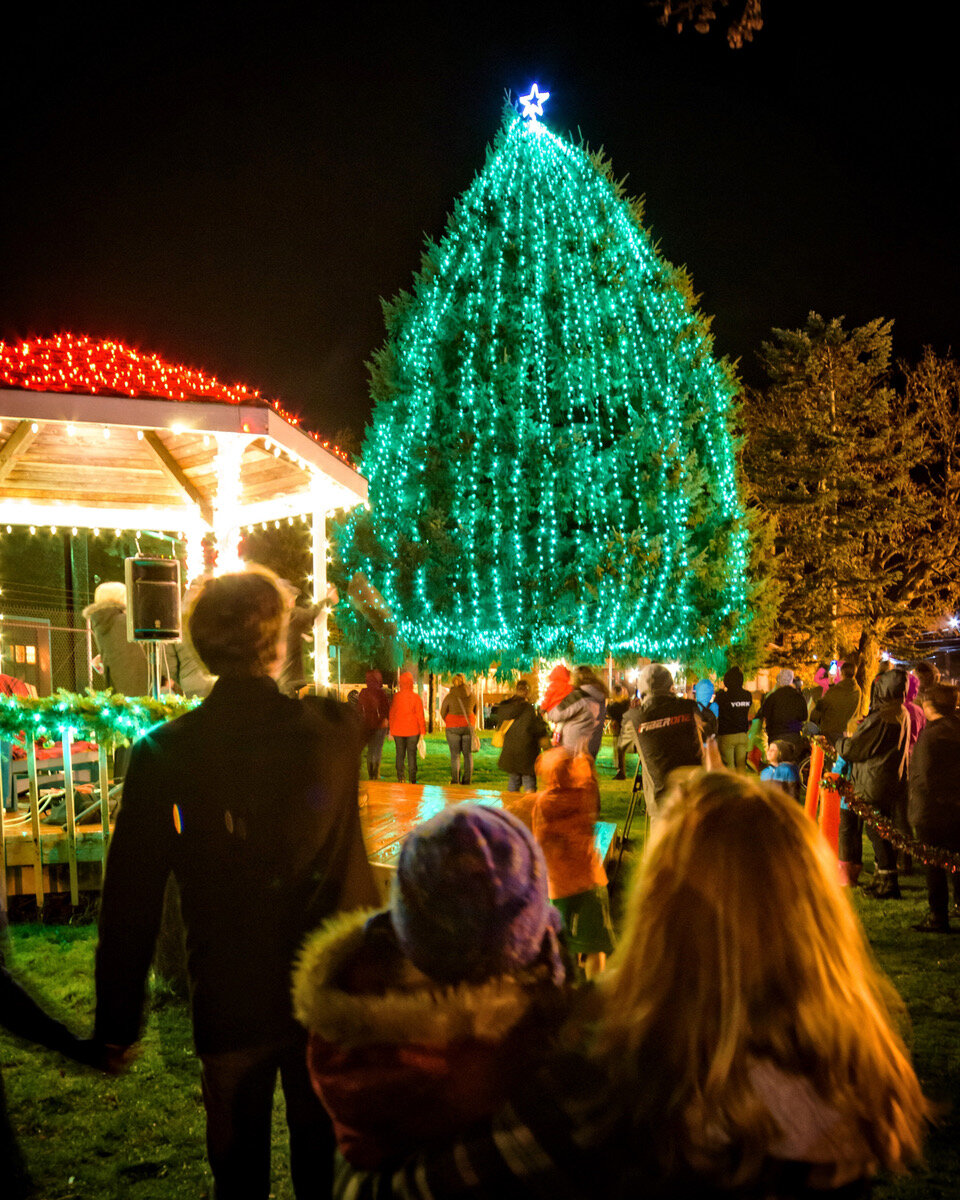
Shelton’s roots run deep.
“During the Christmas tree boom, every available hand was cutting trees and filling rail cars for worldwide deliveries. Container ships were filled with Mason County trees.”
Shelton is typically branded as a logging community. The Paul Bunyan tale goes that children were born in caulk boots and graduated to a peevee and pike pole when they were tall enough. Consequently, Railroad Avenue was built wide to accommodate logging trucks going down to the mill, but trees weren’t just cut to make into boards or pulp, Shelton was also known as “Christmastown, USA – the Christmas Tree Capital of America.”
In 1918, mill manager, G.R. Kirk, received word from his brother-in-law in Texas requesting a train car full of wild-cut Douglas-fir trees for Christmas. Initially doubtful, Kirk sent the trees and was surprised to receive an order for two loads the next year. Instead he cut three carloads and headed to Los Angeles to sell them himself. He never went back to milling.
Wild Christmas trees from Mason County became a major product shipped all over the US.
Early Christmas tree cutters developed methods of “culturing” – trimming wild trees with machetes to promote the fluffy growth for Christmas trees. Fertilizers were also introduced to encourage deep emerald greens. A serendipitous side effect of fertilization was that it boosted the growth of salal and evergreen huckleberry – important crops for the floral greenery industry.
The superior quality Mason County trees has long been recognized. In 1972 and 1977 noble firs (Abies procera) from the John Hofert Company were selected to grace the Blue Room at the White House. Trees from nearby Elma in Grays Harbor County (1999 and 2002) and Rochester in Thurston County (2004) were granted this honor more recently from the State of Washington.
In the 1930s, the John Hofert Company and the G.R. Kirk Company diversified to Christmas tree farming, which had been popularized by growers such as Shelton’s Fred Peste with his Douglas-fir Christmas Tree Company. Peste founded the Pacific Northwest Christmas Tree Association, which still supports Christmas tree growers in Washington and Oregon.
The Christmas tree market shifted in the 1990s from favoring the hardy natural Douglas-firs to cultivated Noble firs. This forced growers to diversify and focus their operations in more agriculturally rich soils as Mason County’s glacial till soil could not provide the nutrients. Jim Hunter of Hunter Christmas Trees focused his business in southern Washington.
Hunter Christmas Trees maintain a local Mason County connection with much of their sorting, packaging and selling still done out of their farm outside of Shelton. Also family owned Hunter Farms in Union sells farmed Christmas trees and hosts a U-cut tree lot.
Although, it seemed in the 1980s that the fake Christmas tree might be threatening the “real kind,” the popularity of a true fresh Christmas tree seems as strong as ever. The National Christmas Tree Association’s 2018 Christmas Tree Report analysing national tree sales revealed that tree sales are enjoying a resurgence due to environmentally conscious millennials.
Not only are natural Christmas trees compostable, they are produced locally with sustainable practices and their purchase supports local tree farmers.
Plus getting a Christmas tree is an experience. Many of the U-cut farms now focus on fostering an annual family tradition with photo-opportunities, hot apple cider, cart rides and some even have petting zoos.




